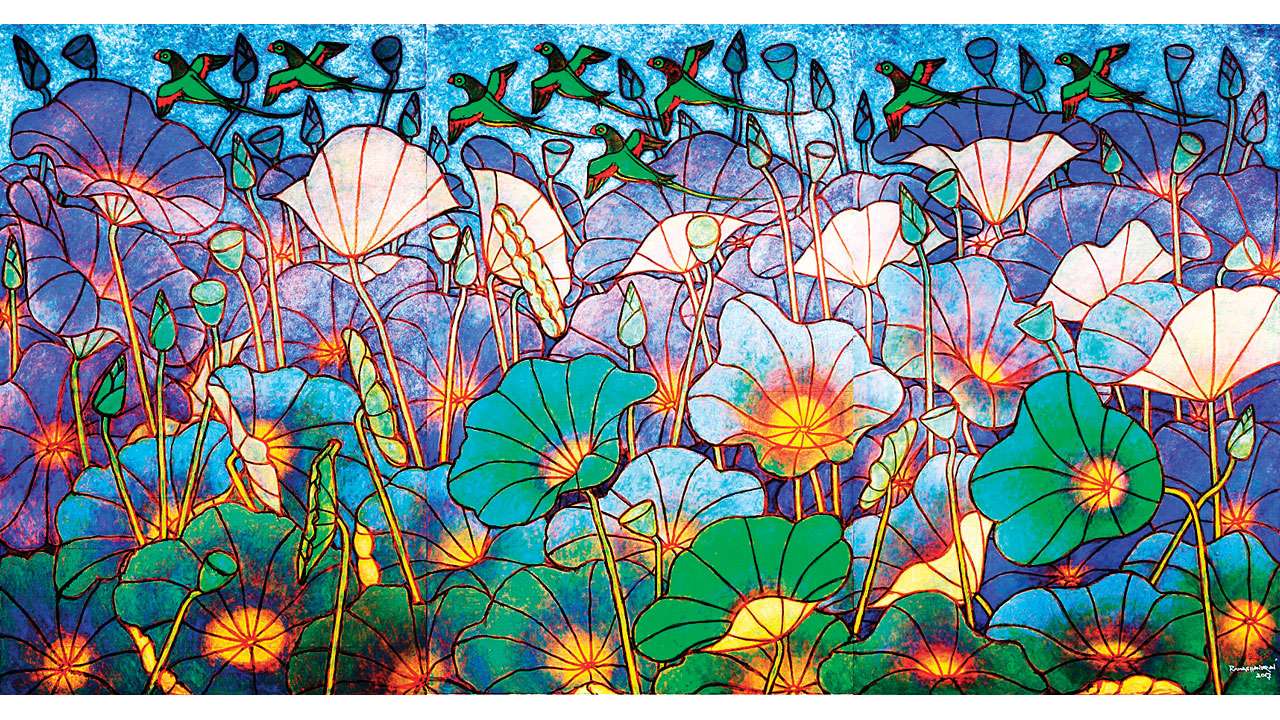
Padma Bhushan recipient A Ramachandran is one of the many illustrious artists who use their works as a medium of self-expression as well as a tool for commentary on the socio-political scenario. In his 51-year-old career, he has explored an expressionistic style that depicted the angst of urban life and then graduated towards a more subtle yet nuanced style that captured as well as celebrated nature’s beauty. In a retrospective curated by R Sivakumar, which is currently underway at the National Gallery of Modern Art in Mumbai, over 260 of his works are on display. Created between 1968 and 2019, they comprise mural-size paintings, sculptural installations, single-piece works, etchings, watercolours, drawings and illustrated books. The curator tells After Hrs what went behind the event and more…
Ramachandran has two distinct phases, during each one he chooses to swim against the current, specially so in the latter one. This makes him an uncompromising individualist. The strength of his work is such that its affective impact is immediate but his unique choices and the context in which he makes them isolates him from the main stream, that makes him an artist whose intentions are not too readily comprehended. For instance, compared to the work of any other contemporary of his, his recent work is visually beautiful, almost seductive. However, to conclude that this is his main burden would be wrong, a serious viewer will realise that there is also cohesive critique of modernity and progress, and a vision of an alternate world within them.
Though Ramachandran’s work has been shown in Delhi and several other cities, it has not been featured on a retrospective scale in Mumbai. Since his creations are large, one needs a space that is huge enough to show them in strength. The decision of the NGMA to collaborate with Vadehra Gallery, which represents Ramachandran, provided such an opportunity.

Spring time in Undri Village
More often than not, the curator’s role is like that of a cinematographer or editor in a film. He or she comes onto the scene after the artist and the gallery make certain decisions. What the viewers eventually see depends upon the work of the curator but he or she doesn’t call all the shots. One can research and write a text on one’s own initiative, but cannot curate an exhibition with the same kind of freedom. One has to work with what is available, what can be borrowed, what the space and the resources allow etc. And an exhibition of this scale doesn’t come cheap. So, eventually it is the product of a creative, intellectual and economic negotiation in which the artist, the curator and the gallery are equally involved. I have been researching and writing on Ramachandran for over two decades, I suppose that is why I was called in to curate this exhibition.
I have a certain reading of the artist’s work, and certain constraints are placed upon me in the form of the works that can be sourced, the nature of the space in which the exhibition has to be displayed etc. Bringing about a fit between them and being able to convey my reading of the artist to the viewers through the creation of a viewing experience without too much verbal interventions is my challenge. The curator, I believe, should have a voice but should play the role a fellow viewer looking at the artist along with the rest.
WHEN: Till June 12; 9 am to 6 pm
WHERE: National Gallery of Modern Art, Kala Ghoda